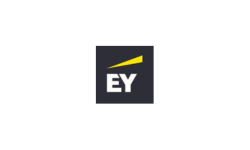CEO succession planning
Whilst the number of areas involving board oversight has increased dramatically over recent years, Chief Executive Officer (CEO) succession remains one of the most important director responsibilities, according to a Report from Deloitte. The CEO is usually the most visible and prominent position in a company. An effective succession planning strategy can result in a CEO with transformative leadership potential who can execute the company’s long-term vision and can add value for shareholders and other stakeholders.
Board role
The board’s role in succession planning is unique and one nof its highest-priority activities. Boards need to think about the rest of the management team and consider whether an incoming CEO, when combined with other key members of the executive team, has the set of qualities that are most valued by the company’s stakeholders.
Qualities and characteristics
There has been a shift in what boards look for in CEO candidates. In the past, boards often looked for a strong leader with a fixed, specific point of view, nurturing a specific candidate for the CEO role. This approach has its merits and evidence links this type of succession with improved company performance.
Now when selecting a new CEO, factors to consider include:
- external factors – geopolitical forces and the macroeconomic climate;
- company needs – current long-term strategy and industry- specific concerns; and
- candidate qualities – appropriate leadership style and internal v external candidates.
Talent plays a huge role, but it is important to consider: fit with the company strategy and vision; what is happening at the company; and company needs given company industry, history, maturity, and other unique characteristics. However, with a shifting geopolitical and economic operating environment, different qualities are now prioritised, such as openness to innovation, humility and agility. As both board members and companies have become more flexible, so too has the candidate selection process. As a result, some boards might consider casting a wider net and designing a selection process around multiple candidates.
Process
In terms of the process, the structure will, and should, vary based on a company’s culture, norms and industry. The following things should be borne in mind:
- use of third parties: boards want to be as objective as possible in selecting a new CEO and many engage search firms or other outside consultants. In some cases, adding a third party can create distance between the candidates and the board. Ideally, the search process should be flexible enough to adjust for this if it becomes a concern.
- timing: companies start working on succession planning on average about two years before the current CEO’s planned departure. Starting earlier or later than that depends on circumstances. Consideration should be given as to how an extended succession planning process may be perceived by the incumbent CEO and the company’s stakeholders.
- existing management roles: some boards deliberately talk with C-suite executives not in contention for the CEO role. Incorporating perspectives from other levels of management can give a more holistic sense of the leadership qualities of internal candidates.
- balancing internal versus external candidates: boards often want to consider both types of candidates. Some companies have a culture and preference for internal candidates, but sometimes there are no qualified candidates available.
Communication
Communication with candidates who are not selected is key. Boards want to see a combination of qualities, agility, resilience, team leadership and vision, that can be hard to find in one person. Sometimes an individual may be highly qualified but just not a good fit for the CEO role at the time.
While communication and transparency are important for everyone in the process, they are especially key for internal candidates. Failure to be transparent could be seen by candidates as an indictment of their leadership or work quality. It could also prompt high potential internal candidates to seek opportunities with other companies.
Prospective candidates
Many prospective candidates are starting to work with coaches and mentors who specialise in CEO-level roles. Sometimes serving on another company’s board can provide future candidates with a valuable perspective on the link between governance and succession planning. CEO selection involves many parties with varying influence in the decision- making process. In most cases the outgoing CEO will have an influential voice in the selection of their successor. Even if a candidate seems otherwise qualified, without a strong vote of confidence from the current CEO they are unlikely to be selected. Even more so when retiring CEOs often stay on as executive Chair or in a similar capacity.
For the full Report go to: https://www2.deloitte.com/us/en/pages/center-for-board-effectiveness/articles/the-never-ending-story-ceo-succession-planning.html









